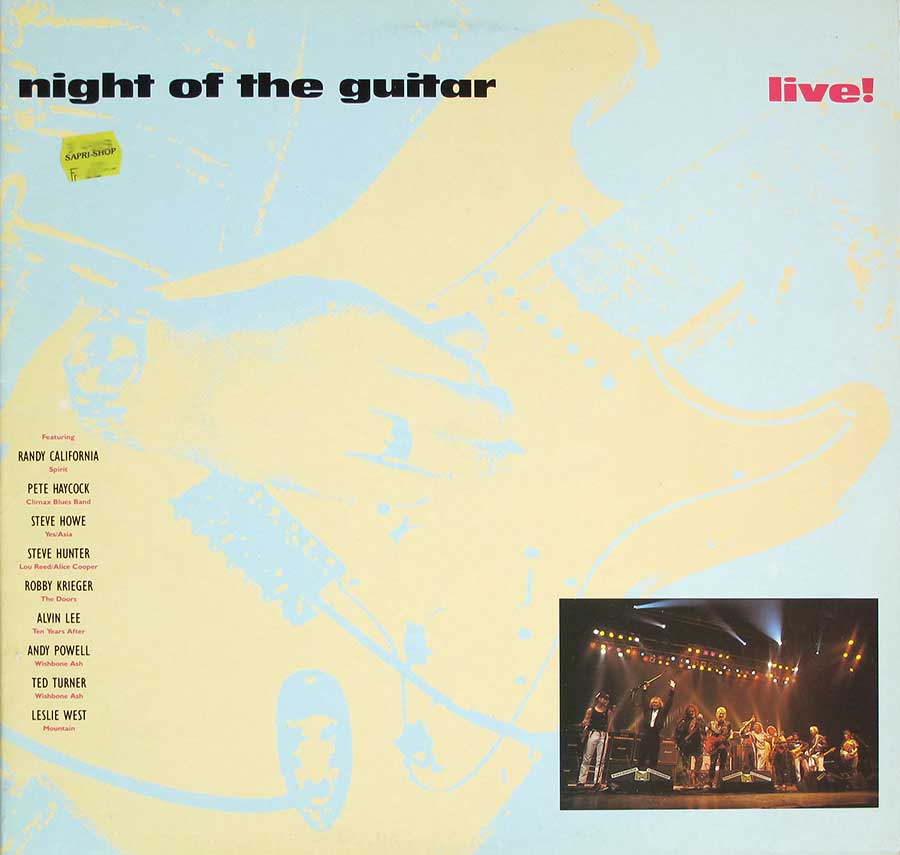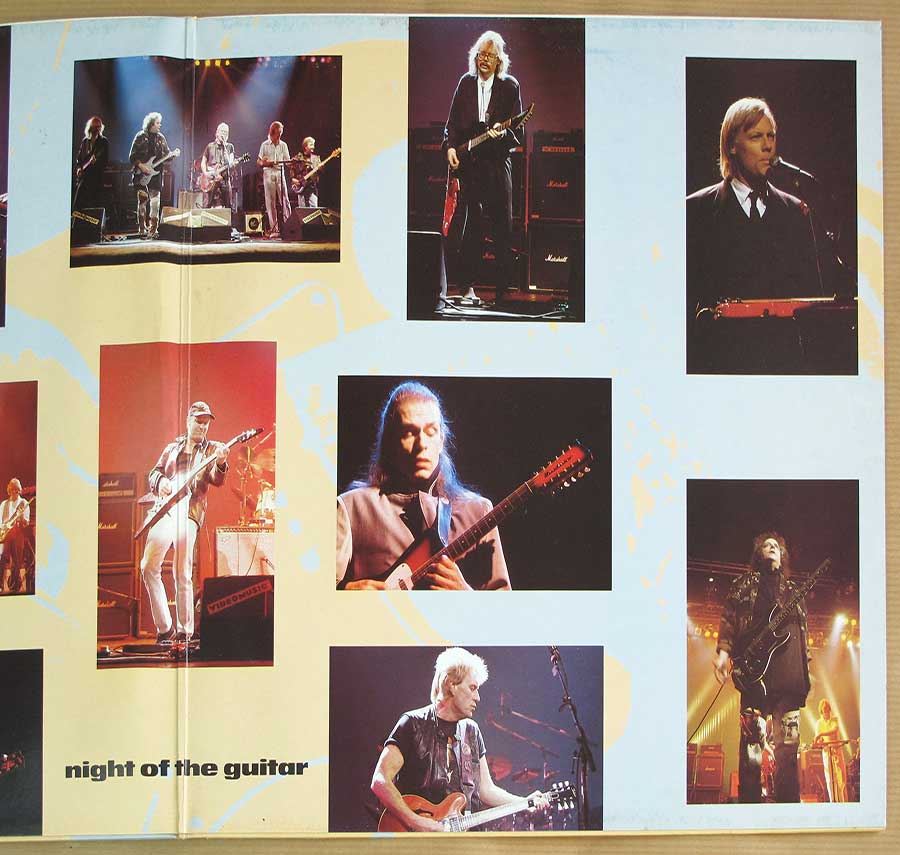"Night of the Guitar Live!" (1989) Album Description:
“Night of the Guitar” was a rare summit meeting — a late-’80s dream session where nine guitar heroes from wildly different worlds shared the same stage, chasing tone, trading solos, and trying not to trip over each other’s pedalboards. It wasn’t a competition so much as a celebration of the electric guitar’s unruly, expressive power.
The Late-’80s Guitar Boom
By 1989, the world had endured a decade of fretboard gymnastics. Shredders ruled MTV, and guitar magazines were printing more tablature than text. Into this landscape stepped the “Night of the Guitar” tour — an antidote to the neon-saturated excess of the hair-metal era. Instead of posing with smoke machines, these players let the notes do the talking.
The Idea Takes Shape
The concept came from I.R.S. Records founder Miles Copeland, who imagined a kind of traveling guitar museum — alive, plugged in, and dangerously loud. He gathered a lineup that spanned generations: Steve Howe from Yes’s labyrinthine prog, Leslie West’s brawny blues from Mountain, Robbie Krieger’s psychedelic jazz leanings from The Doors, and Alvin Lee’s Woodstock-forged lightning speed from Ten Years After. Add Randy California, Andy Powell, Ted Turner, Pete Haycock, and Steve Hunter, and you had a fretboard United Nations.
Sound and Spirit
The music was as eclectic as the cast. Howe’s “Clap” shimmered with classical precision; West’s “Theme from an Imaginary Western” was all muscle and melancholy; Krieger’s “Love Me Two Times” slithered with Doors-like mystery. The finale — a communal jam on “All Along the Watchtower” — was pure chaos in stereo, a glorious clash of egos and overdrive that somehow resolved into harmony.
Against the Grain
In an age when most guitarists were chasing speed records, “Night of the Guitar” dared to value tone, phrasing, and personality. Each performance reminded audiences that guitar playing wasn’t about velocity; it was about storytelling — bending a note until it cried or grinned back at you. It was, in essence, a masterclass without the smugness.
The Crowd and Critics
Audiences loved it. Critics didn’t quite know what to do with it — too nostalgic for the trend-hungry press, too eclectic for radio. But among musicians, the record became a kind of cult artifact, proof that you could gather legends without it turning into a tired “supergroup” cliché. It captured the spirit of live rock at a time when most concerts were pre-programmed light shows.
Legacy
Decades later, “Night of the Guitar” stands as a time capsule from rock’s last great age of analog heroics. No click tracks, no miming, no digital polish — just tube amps, sweat, and the occasional missed cue that somehow made it real. For those who lived through the era, it’s more than an album; it’s the echo of an evening when the guitar still ruled the night.




